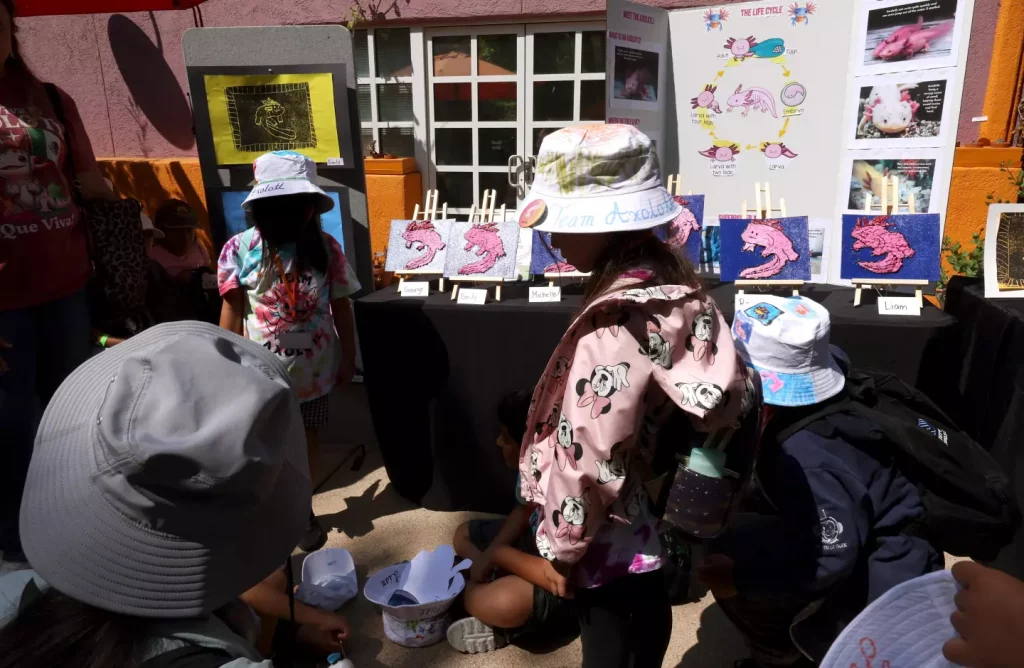For many migrant children in Los Angeles, a five-week summer school program has long offered something they rarely have—stability, learning, and joy. Eight-year-old RR, a rising third-grader whose family moves often for seasonal farm work, looked forward to seeing her favorite teacher again and visiting the L.A. Zoo, where she learned about the axolotl, a rare salamander. But this cherished program is now under serious threat.
The summer camp, part of the Los Angeles Unified School District (LAUSD) Migrant Education Program, is one of many federally funded efforts facing major cuts under the Trump administration. Officials argue the program is costly and violates immigration policy directives, particularly because many participants are undocumented or come from mixed-status families. As a result, funding was frozen this summer despite prior congressional approval, and future budgets propose eliminating the program.
This year, fear and funding uncertainty hit hard. While the summer program typically draws about 45 children, only 25 attended in 2025. Concern over immigration raids led several families to withdraw, even when the district offered to pick up their children from home. “They didn’t want to let their child out the door because of fear of what might happen,” said Ruth Navarro, LAUSD’s program lead. Even parents who normally joined learning workshops stayed away.
Instead of the usual three school buses, only two were needed this year. Participation in the on-site parent workshops—focused on reading, emotional development, and legal aid—fell sharply. A livestream was offered, and 15 parents tuned in online. The district also boosted access to virtual classroom options for children, drawing 40 students. However, online learners missed out on seven enriching trips to the zoo and one-on-one learning, which are key parts of the program.
At the zoo, children like RR not only study animals but also build confidence through public speaking. RR proudly explained how axolotls breathe through gills, change color to hide, and aren’t fish because they have legs. “I thought it was just like a normal fish,” she said, “but then I noticed the legs.” Wearing a dark ponytail and glasses, RR held a microphone and guided visitors like a young zookeeper—a big step for a child who had never even been to a swimming pool.
Zoo staff say these kids blossom over the summer. “They learn interpretation skills, which is amazing for building up confidence and public speaking in the future,” said Coral Barreiro, community programs manager at the L.A. Zoo. Children meet zookeepers, mimic their presentations, and end the program by sharing their knowledge with parents and guests.
To keep the program running this summer, LAUSD drew on reserves intended for other purposes. The migrant student program also covers tutoring, Saturday classes, and other support services during the school year for about 1,700 migrant students out of the district’s 400,000 total. These children often have parents with limited education and little or no English fluency, who work in agriculture or dairy industries and relocate frequently.
Critics of the federal cuts, like Mayra Lara from EdTrust-West, warn that vulnerable students will suffer the most. “Without federal involvement, some students are going to lose,” she said. “Historically, it has been migrant students, students of color, and low-income students.”
Supporters of the Trump administration’s stance, including Neal McCluskey of the libertarian-leaning Cato Institute, argue that such education programs should be left to state and local governments. “The federal government doesn’t have constitutional authority to fund programs like that,” McCluskey said, citing the $37 trillion national debt.
Yet the Trump administration’s budget proposal didn’t just argue legality—it dismissed the migrant education program outright. It claimed the effort was costly, unproven, and encouraged “ineligible noncitizens” to use taxpayer money, taking resources away from U.S.-born students.
For the families who rely on it, however, the summer program is more than a cost. It is a lifeline for education, enrichment, and safety. As budget battles and political agendas threaten its future, the children who benefit most—like RR—face the possibility of losing one of the few stable spaces designed just for them.

